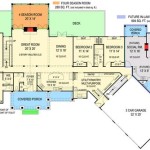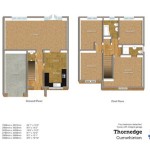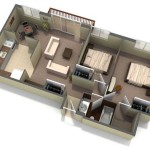Understanding Bright House Networks Internet Plans
Bright House Networks, now operating as Spectrum after its acquisition by Charter Communications, offered a range of internet plans designed to cater to varying user needs. While the specific plans originally offered under the Bright House name are no longer available to new customers, understanding what they offered provides valuable insight into the types of internet services consumers seek and can still find under the Spectrum umbrella. This article will explore the key aspects of Bright House Networks internet plans, including their speed offerings, pricing structures, and additional features, to provide a comprehensive overview.Before exploring the details of specific plans, it’s important to understand the context of Bright House Networks. The company primarily served regions in Florida, California, Alabama, Indiana, and Michigan. Its focus was on providing reliable high-speed internet, cable television, and phone services to residential and business customers. With its acquisition by Charter Communications, Bright House services transitioned to the Spectrum brand, and their existing plans were largely replaced with Spectrum’s own internet offerings.
Nevertheless, understanding the legacy Bright House plans helps in understanding the factors that customers consider when selecting an ISP. Internet speed, price, data allowances, and contract requirements were all crucial factors in Bright House’s offerings, and remain equally important in today’s market. This article will focus on those critical aspects as they were reflected in the former Bright House plans.
Speed Tiers and Bandwidth Options
Bright House Networks offered internet plans with varying speeds to accommodate different usage patterns. These plans were typically tiered, with different download and upload speeds available at different price points. The lowest tier was generally designed for basic internet browsing, email, and light streaming, while the higher tiers catered to households with multiple users, heavy streaming demands, online gaming, and the needs of those working from home.
The specific speed tiers varied slightly depending on the region and availability. However, a typical range included plans offering download speeds from 10 Mbps to 300 Mbps. The upload speeds were typically asymmetrical, meaning they were significantly lower than the download speeds. This is a common practice among cable internet providers, as most residential users download more data than they upload. For example, a plan offering 100 Mbps download speed might only offer 10 Mbps upload speed.
Higher speed tiers were marketed towards users who needed to support multiple devices simultaneously, stream high-definition video, or engage in online gaming with minimal latency. The ability to handle these activities smoothly depends heavily on sufficient bandwidth. Families with multiple streaming devices, gamers who require low ping times, and professionals who frequently upload large files all benefited from the higher speed options.
It is also important to understand the difference between advertised speeds and actual speeds. Bright House, like other internet providers, advertised "up to" speeds. The actual speeds experienced by users could vary depending on factors such as network congestion, the user's equipment (router and modem), and the number of devices connected to the network simultaneously. Bright House, like Spectrum, also commonly uses DOCSIS technology, which is a shared infrastructure. This means that network performance can be affected by the demand on the local network.
Another factor to consider is the technology used to deliver internet services. Bright House primarily used cable internet, which relies on the same coaxial cables used for cable television. While cable internet can offer high speeds, it shares bandwidth among users in the same neighborhood. This can sometimes lead to slower speeds during peak hours when many people are online simultaneously. Other internet technologies, such as fiber optic, provide dedicated bandwidth to each user, resulting in more consistent speeds, but may not have been offered in all Bright House service areas.
Pricing Structures and Contract Terms
Bright House Networks employed a range of pricing structures for its internet plans. These structures often involved promotional rates for new customers, followed by standard rates after a certain period. The promotional rates were often significantly lower than the standard rates, making the first year or two of service more affordable. However, it was crucial for customers to be aware of when the promotional period ended and what the standard rate would be to avoid unexpected price increases.
Contract terms were another important aspect of Bright House's pricing structure. Some plans required customers to sign a contract for a specific duration, typically one or two years. In exchange for committing to a contract, customers often received a lower monthly rate. However, breaking the contract before its expiration could result in early termination fees. Other plans were offered without contracts, providing more flexibility but often at a higher monthly cost.
Beyond the base price of the internet plan, there were often additional fees and charges to consider. These could include equipment rental fees for the modem and router, installation fees, and taxes. It was essential for customers to carefully review the terms and conditions of their service agreement to understand all the potential costs involved. Bundling internet service with other services, such as cable television and phone, could sometimes result in overall cost savings, but those bundles also came with their own specific terms and conditions.
The pricing for Bright House internet plans generally increased with the speed tier. The higher the download and upload speeds offered by a plan, the higher the monthly price. This reflected the increased infrastructure and bandwidth required to deliver faster internet services. Customers needed to carefully assess their internet usage needs and choose a plan that provided sufficient speed without paying for more bandwidth than they actually required.
The comparison of pricing across different ISPs is essential for making an informed decision. While Bright House was a major player in the markets it served, other ISPs, such as AT&T and Verizon, also offered internet services in some of the same areas. Comparing the prices, speeds, contract terms, and additional fees of different providers allowed customers to find the best overall value for their individual needs. This often involves looking beyond the advertised price and carefully considering all the potential costs and benefits of each plan.
Additional Features and Bundled Services
Bright House Networks often bundled its internet services with other services, such as cable television and phone, to offer customers convenient and cost-effective packages. These bundles typically provided a discount compared to purchasing each service separately. Bundling could also simplify billing and customer service, as customers would only have to deal with one provider for all their communication and entertainment needs.
In addition to bundled services, Bright House offered various additional features with its internet plans. These could include free access to Wi-Fi hotspots in public areas, which allowed customers to stay connected while on the go without using their mobile data. Some plans also included security software to protect against viruses and malware, parental control features to restrict access to inappropriate content, and online storage options for backing up important files.
Customer service and technical support were also important aspects of Bright House's offerings. The company provided various channels for customers to get assistance, including phone support, online chat, and in-person support at retail locations. The quality of customer service can vary, but it is a crucial factor to consider when choosing an ISP. Reliable and responsive customer service can make a significant difference when resolving technical issues or billing disputes.
The availability of advanced features, such as static IP addresses, was also a consideration for some customers. Static IP addresses are useful for hosting servers, running online games, or accessing a home network remotely. However, they typically come with an additional monthly fee and are not included in the standard internet plans. Customers who required a static IP address needed to ensure that it was available and factor the additional cost into their decision-making process.
Bright House, like Spectrum currently, also offered services tailored to small businesses. These business internet plans often included higher speeds, static IP addresses, and priority customer support. Small businesses have different internet needs than residential customers, requiring more reliable and faster internet access to support business operations, such as online sales, video conferencing, and data backups. These considerations must all be weighed by the potential subscriber to determine the best plan which addresses their data needs.

Broadband Internet Data Sheet Bright House Networks Business

Business Communications Data Sheet Bright House Networks

Connect2compete Bright House Networks

Stop The Cap Activation Fee

Charter Goes Bright House Ping Telecom Ramblings

Bright House Customers You Now Belong To Spectrum For Cable Tv Phone And Internet Service

Record Industry S Latest Isp Copyright Litigation Settled At The Very Last Minute Complete Update

Defa14a

Bright House Cable Bills Going Up March 1 Farmington Mi Patch

Bright House Customers Should Expect Changes With Switch To Spectrum








